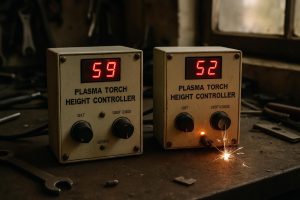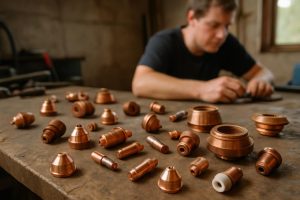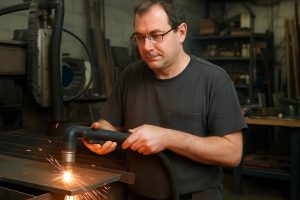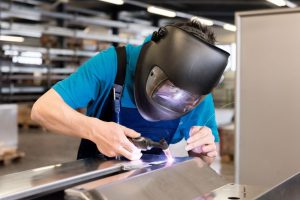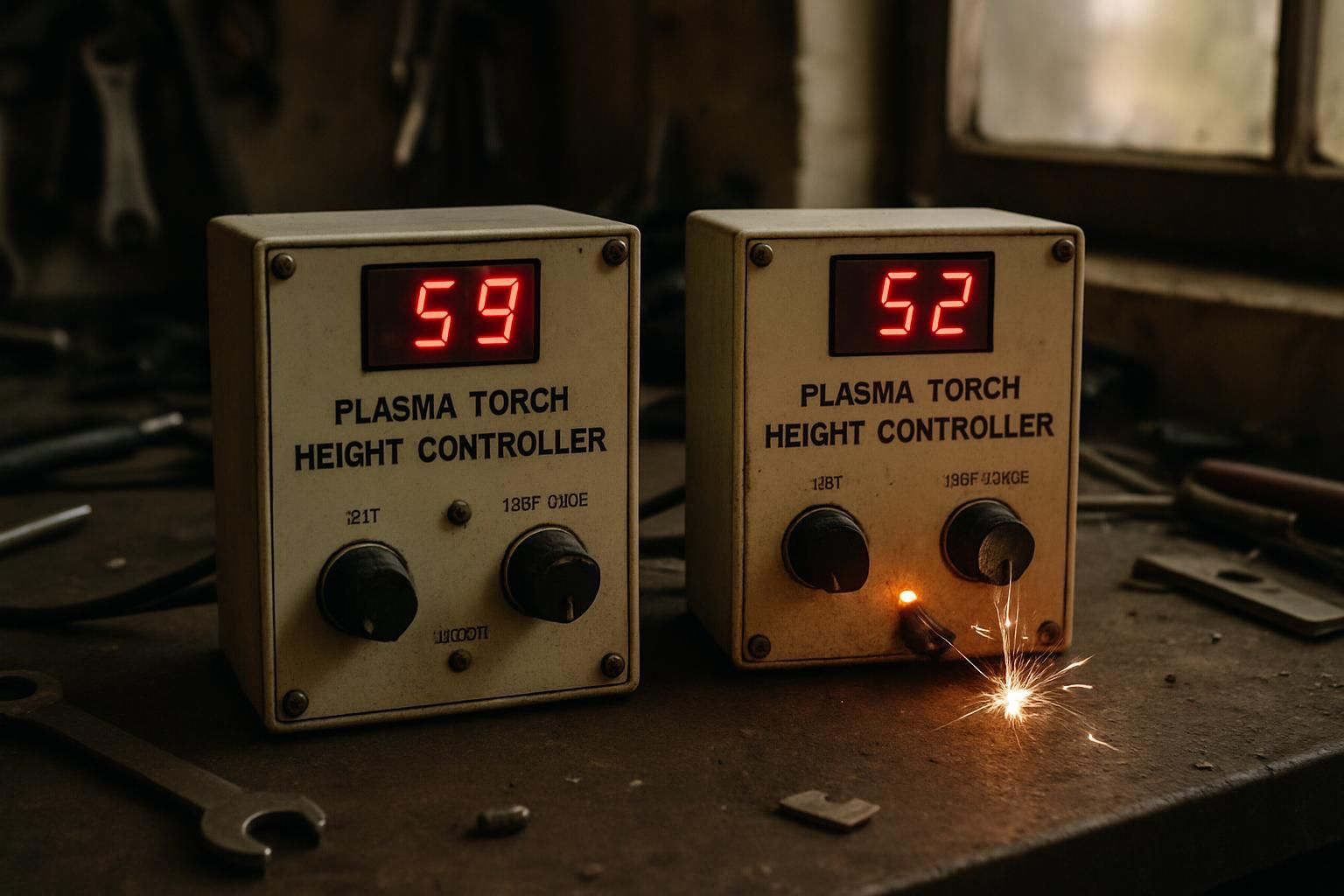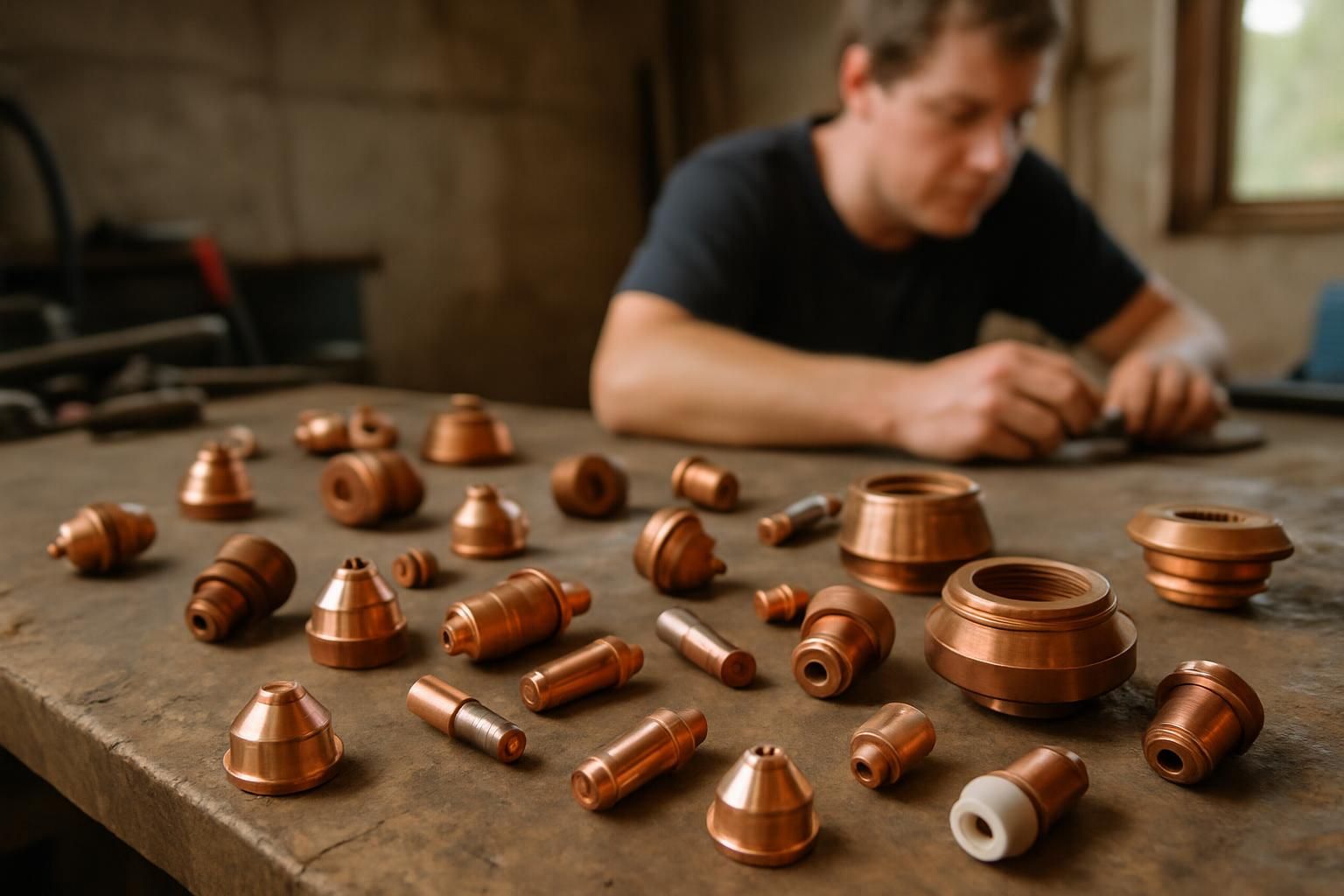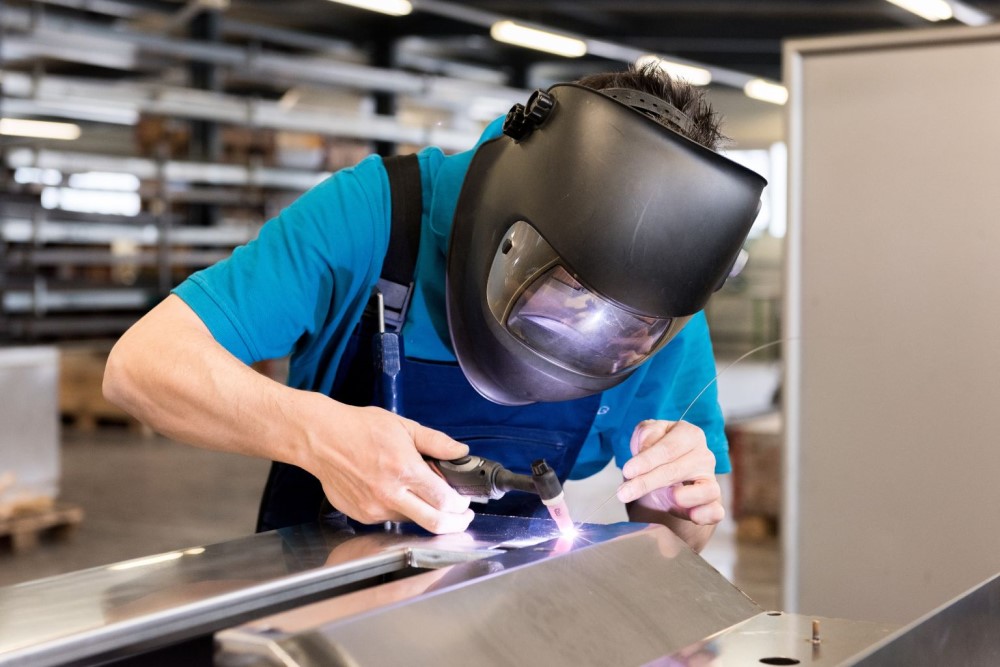Plasma materials are important for cutting and shaping metal. This guide explains plasma consumable materials, why they matter, and the changes by 2025. Plasma cutting uses special parts like electrodes and nozzles that withstand high heat and electricity. 1 By 2025, new nozzle shapes improve cutting efficiency. Tungsten gains popularity in various industries due to an IAEA project.
Materials include copper for its electrical conductivity, silver nanoparticles for their germ-fighting properties on surfaces, tungsten for its strength at high temperatures, and hafnium-tipped electrodes that handle up to 4,041°F without melting.
Choosing the right material enhances precision in cuts and extends tool life. 2
Future advancements feature dual flow nozzles and easily replaceable parts like Hypertherm SYNC cartridges which save money over time. Proper maintenance can extend tool life by 20-30%. 3
Understanding Plasma Consumable Materials
Plasma cutting technology uses a strong electrical arc to create high-temperature plasma that cuts metal. To keep the process efficient, parts like electrodes and nozzles need regular checks and replacements. 1 This step helps extend the life of the plasma cutter.
Plasmaterials, Inc., established in 1987, focuses on supplying high-quality materials for these cutting tasks. The company highlights that correct use and maintenance of consumable components can greatly increase a machine’s lifetime. 2
Their products include detailed information about purity levels and elements present. This data ensures users find the right consumables for their specific needs, leading to better cuts and fewer part changes.
Types of Plasma Consumable Materials

Plasma consumable materials include copper, silver, tungsten, and hafnium. Each offers distinct advantages for cutting tasks.
Copper-Based Materials
Copper-based materials are ideal for plasma cutting consumables due to their excellent electrical conductivity. They effectively function as electrodes, nozzles, swirl rings, and shield caps in plasma cutting tools. 3 For backing plates, OFE copper is commonly used alongside stainless steel, molybdenum, or aluminum to ensure they fit various needs with their customized sizes.
Diffusion bonding is the method used to attach sputtering targets to these backing plates, providing strength and good heat conduction. Proper maintenance of these parts can extend electrode life by 20-30%.
Regular inspections of electrodes also maintain the accuracy of cuts.
Silver-Based Materials
Silver-based materials offer big benefits for plasma consumable materials. Silver nanoparticles are known for stopping bacteria. 4 They are perfect for making germ-fighting coatings.
In plasma-based deposition, these particles help create antibacterial films.
Adding silver to nanocomposites prevents bacteria from attaching and building harmful layers. With Ag NPs layered under plasma polymer layers, the mix becomes more stable. This setup also reduces silver leakage into the environment.
Yet, research must continue to understand how long these coatings last.
Tungsten and Tungsten-Alloy Materials
Tungsten, a metal with the highest melting point, is ideal for high-heat jobs in aerospace and medical fields. 5 People are finding new uses for tungsten, especially in fusion technology projects led by the IAEA. 6
Advances in technology have made tungsten less prone to breaking and better at resisting oxidation. 5 This has increased its use across various industries. A special issue on new findings about tungsten materials will be published by January 10, 2026.
Hafnium Materials
Hafnium materials excel in plasma cutting due to their ability to withstand temperatures up to 4,041°F. 7 This feature renders them resilient and wear-resistant. Multiple manufacturers prefer hafnium for plasma electrode tips, which leads to budget savings as these tips have a longer lifespan. 7
The integration of hafnium augments the quality of the cut and solidifies the efficiency of the cutting equipment. Its exceptional melting point and sturdy quality extend machine longevity and improve generalized performance.
Transitioning to hafnium-tipped electrodes considerably fortifies the resilience and efficiency in plasma cutting procedures.
Pros and Cons of Common Plasma Consumable Materials

Every material used in plasma consumables comes with its ups and downs. Some might be great at handling heat, while others shine in electrical conductivity, affecting both cost and performance.
Durability and Heat Resistance
Durability and heat resistance matter a lot for plasma consumable materials. Here’s how some common materials stack up.
| Material | Durability | Heat Resistance |
|---|---|---|
| Hafnium | High | Can handle up to 4,041°F (2,227°C) |
| Copper | Good | Excellent electrical conductivity but lower heat resistance than Hafnium |
| Tungsten | Very high | Superb at high temperatures |
| Silver-Based | Lower than Copper and Tungsten | Good, but not the best for very high temperatures |
Hafnium tops the chart in heat resistance, withstanding temperatures up to 4,041°F. 7 Copper shines in electrical conductivity, which makes it less ideal for extreme heat. Tungsten shows very high durability and excellent heat resistance. Silver-based materials lag behind a bit in both aspects. Regular maintenance can boost electrode life up to 30%. 7 Quality matters too. Better brands mean longer-lasting electrodes. Always inspect for wear to maintain cutting quality.Choosing the correct electrode for the material thickness enhances both performance and longevity. 8
Electrical Conductivity Comparison
Electrical conductivity matters a lot in plasma cutting. Different materials conduct electricity in varied ways. This affects how well they cut. Let’s look at some common plasma consumable materials and how they stack up against each other in terms of electrical conductivity.
| Material | Electrical Conductivity (% IACS) |
|---|---|
| Copper-Based Materials | 100 |
| Silver-Based Materials | 105 |
| Tungsten and Tungsten-Alloy Materials | 31 |
| Hafnium Materials | 13 |
This table shows copper at the top for conductivity. Copper-based materials have excellent electrical conductivity. They are a great choice for high-quality cuts. Silver is slightly better but often costs more. Tungsten and hafnium fall behind. They are less conductive. This means they are not the best at conducting electricity but have other benefits.
I’ve worked with these materials first-hand. From my experience, copper-based consumables last longer. They reduce wear on your plasma cutting system. This saves money over time. Always store these materials properly. It keeps them clean and ready for use. Regular checks and maintenance also help. They make sure your system works its best.
Choosing the right material can change your cutting performance. It’s all about finding what works for your needs. Each material has its pros and cons. Think about what you need most. Is it cut quality? Cost savings? Durability? Your choice impacts your results.
So, use this info to make your choice. The right material can boost your cutting performance. It all comes down to understanding each material’s electrical conductivity.3 8
Cost-Effectiveness
Shifting gears from electrical conductivity to finance, specifically the cost-effectiveness of plasma consumable materials. High-quality consumables improve cutting quality and save money over time. 9 The right investment means reduced downtime and increased productivity. The longevity of these parts varies based on cutting speed, power levels, and material thickness. Regular equipment checks can prevent issues. Products like Hypertherm SYNC cartridges facilitate easy replacement of worn parts. Wise management of these materials can result in significant savings over time. Now, let’s present the cost aspects simply.
| Material Type | Durability & Heat Resistance | Electrical Conductivity | Cost |
|---|---|---|---|
| Copper-Based Materials | Good | Excellent | $$ |
| Silver-Based Materials | Better | Best | $$$ |
| Tungsten & Tungsten-Alloy Materials | Best | Good | $$$$ |
| Hafnium Materials | Good | Good | $$$ |
The table provides clarity. Each material offers distinct advantages. For sustained savings, selecting the appropriate one is crucial. Copper is cost-effective but may need replacement sooner. Silver excels in conductivity but comes with a higher initial cost. Tungsten alloys boast the greatest durability but also the highest price. Hafnium offers a compromise, though not inexpensive. The right selection can lead to reduced expenditures over time, less downtime, and enhanced cutting performance.
Material Selection and Its Impact on Cutting Performance

The material choice for plasma cutting consumables, like electrodes and nozzles, directly impacts the cut quality and lifespan of the tools.
Precision and Cut Quality
Choosing the right materials improves plasma cutting performance. Using suitable metals ensures cuts are precise with less heat damage. Hafnium electrodes stand out for their high melting resistance, making them durable and efficient in demanding settings. 1Selecting a fitting nozzle based on metal thickness is essential for perfect cuts. 9
The type of gas affects cutting quality and speed. Proper maintenance of electrodes and nozzles keeps cuts clean and sharp. 1 Replacing nozzles as required maintains a focused plasma beam, enhancing work on various metals.
Resistance to Wear and Tear
Plasma cutting consumables wear out from high heat and sparks. To slow this down, start cuts at material edges to prevent damage. 10 The right piercing methods reduce wear too. Avoiding double arcing keeps parts lasting longer.
Maintaining the proper distance during cuts extends part life. Cutting at the correct speed is crucial. Regular checks and maintenance can catch damage early, stopping it from getting worse.
Advances in materials technology focus on making these parts more resistant to abrasion and thermal stress. Improved cooling mechanisms also help enhance durability and cutting efficiency. 9
Enhancing Consumable Longevity Through Material Choice

Selecting strong materials such as copper and hafnium enhances the life span of consumables. These materials resist heat and prevent wear, resulting in less frequent replacements and cost reductions. 9
Appropriate handling and storage prevent destruction. The proper choice of nozzle prolongs its lifespan. 9 Consistent inspections ensure seamless function, decreasing the demand for expensive new components.
The use of top-tier materials saves money and enhances tool efficiency over time.
Future Trends in Plasma Consumable Materials for 2025
By 2025, changes in plasma consumable materials will enhance cutting efficiency. New nozzle designs from 2022 improve airflow, resulting in faster and cleaner cuts. 9 The popularity of dual flow nozzles will increase due to their effectiveness.
Using high-quality consumables like Hypertherm SYNC cartridges leads to long-term cost savings. Regular performance checks and maintenance practices reduce wear and tear. 9 Taking care of cutting equipment extends its life and improves job results.
These steps significantly impact cutting quality and tool durability.
Conclusion
This guide outlines the optimal materials for plasma cutting by 2025, provided by Dr. Alex Rivera, an expert in metal fabrication technology with a 20-year history. He emphasizes the importance of choosing appropriate materials for efficient and rapid metal cutting.
Dr. Rivera indicates that safety and clarity about material origins are vital. His advice is to opt for supplies meeting critical safety standards.
For the best results while staying within budget, he recommends high-purity metals such as copper and silver. These materials deliver a harmonious balance of performance and cost.
That being said, these high-grade materials may carry a higher price tag than other alternatives. Prioritizing your needs before making a selection is key.
In summary, Dr. Rivera is confident that this guide will aid in identifying the best choices for plasma cutting tasks in 2025, guaranteeing productive and secure operations.
FAQs
1. What is the Plasma Consumable Materials Guide in 2025?
The Plasma Consumable Materials Guide in 2025 is a must-have resource that provides updated and essential information about plasma consumables used in various industries.
2. Why do I need to follow the Plasma Consumable Materials Guide?
Following this guide helps you understand how to use, maintain, and select plasma consumables effectively for your specific needs. This can enhance productivity and prolong the life of your equipment.
3. How does the 2025 guide differ from previous versions?
The 2025 guide includes updates on new advancements, best practices, and safety measures related to plasma consumables based on industry standards and technological developments.
4. Where can I get access to the Plasma Consumable Materials Guide in 2025?
You can usually find it online through trusted industrial suppliers or by contacting manufacturers directly who often provide these guides as part of their customer service.
References
- ^ https://www.ambersteel.com/blog/plasma-cutting-consumables (2024-02-22)
- ^ https://www.samaterials.com/electrode-materials-for-plasma-cutting-machines.html
- ^ https://plasmacuttingfactory.com/types-of-plasma-consumables/ (2025-01-14)
- ^ https://pmc.ncbi.nlm.nih.gov/articles/PMC6164522/
- ^ https://www.mdpi.com/journal/metals/special_issues/tungsten_alloys
- ^ https://www.iaea.org/newscenter/news/new-research-project-properties-of-tungsten-ions-in-fusion-plasmas (2025-04-11)
- ^ https://plasmacuttingfactory.com/plasma-electrodes-types-sizes-and-prices/
- ^ https://www.isotema.com/en/blog/7626/complete-guide-to-plasma-cutting-pros-cons-and-more (2025-04-14)
- ^ https://plasmacuttingfactory.com/best-plasma-consumables-guide/
- ^ https://plasmacuttingfactory.com/why-plasma-cutting-consumables-wear-out/




